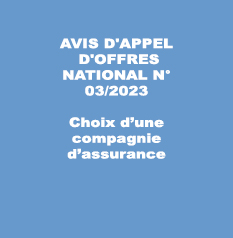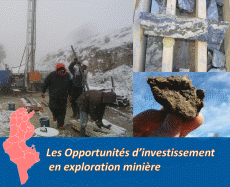| Programme annuel & rapport de suivi technique |
-

Rapport d'activités 2023
-

Programmes Techniques 2024
|
| Géocatalogue |

|
| Appels d'Offres |
-

ACQUISITION DES TICKETS RESTAURANT POUR LE PERSONNEL DE L’ONM
-

CHOIX D’UNE COMPAGNIE D’ASSURANCE
-

ACQUISITION ET MISE EN ŒUVRE D’UN PROGICIEL DE GESTION INTEGRE
|
|
Investir en Tunisie |


|
|
|
|
|
::
Documentation and Editions
>>
Research library
|
| |
|
[
Search by author
]
[
Search keyword
]
[
Search by index
]
[
Search by category
]
|
title of the reference :
|
Carbonate cements in Holocene beachrock
|
|
Publication Date:
|
1989
|
|
Author :
|
Strasser André, Davaud Eric, Jedoui Younès
|
|
Catalogue type :
|
Livre
|
|
Catalogue reference :
|
N°62 (NLD) Sediment. Geol. N°62 Carbonate cements in Holocene beachrock Les ciments carbonatés des beachrock holocènes : exemple provenant de Bahiret el Biban, Tunisie Sud Est. example from Bahiret el Biban, southeastern Tunisia. Holocene beachrock has been studied on the northern and western shores of Bahiret el Biban, a shallow restricted lagoon in southeastern Tunisia. The beachrock consists of horizontal, cemented layers which are 2-15 cm thick. Early cementation took place at the water table below beach ridges, where geochemical, hydrodynamic and possibly also microbiological conditions favored rapid precipitation of aragonite and/or high-Mg calcite. Locally, superimposed low-Mg calcite cements point to subsequent freshwater influence. At one site, six vertically stacked beachrock beds are found. Total-rock 14C dating shows that the highest beachrock bed is older than the one (of the same petrographic composition)situated at the present groundwater level. This implies a downward progression of cementation which probably monitored the sealevel fall following a local highstand about 3000 years ago. bibliogr. Beach rock ; Holocène ; cementation ; lame mince ; donnée MEB ; Donnée microsonde éléctronique ; ciment roche ; action biogène ; niveau mer ; Tunisie ; Tunisie Sud Orientale ; Bhirat el Bibane Davaud Eric Jedoui Younès Strasser André Roches Sédmentaires, Sédimentologie Elsevier Scientific Publishing Company
|
|
Indexation decimale :
|
Roches Sédmentaires, Sédimentologie
|
|
Keywords :
|
Beach rock ; Holocène ; cementation ; lame mince ; donnée MEB ; Donnée microsonde éléctronique ; ciment roche ; action biogène ; niveau mer ; Tunisie ; Tunisie Sud Orientale ; Bhirat el Bibane
|
|
Summary :
|
Holocene beachrock has been studied on the northern and western shores of Bahiret el Biban, a shallow restricted lagoon in southeastern Tunisia. The beachrock consists of horizontal, cemented layers which are 2-15 cm thick. Early cementation took place at the water table below beach ridges, where geochemical, hydrodynamic and possibly also microbiological conditions favored rapid precipitation of aragonite and/or high-Mg calcite. Locally, superimposed low-Mg calcite cements point to subsequent freshwater influence. At one site, six vertically stacked beachrock beds are found. Total-rock 14C dating shows that the highest beachrock bed is older than the one (of the same petrographic composition)situated at the present groundwater level. This implies a downward progression of cementation which probably monitored the sealevel fall following a local highstand about 3000 years ago.
|
|
Exemplaries :
|
TU959
|
|
|
|
|
|
|
|



